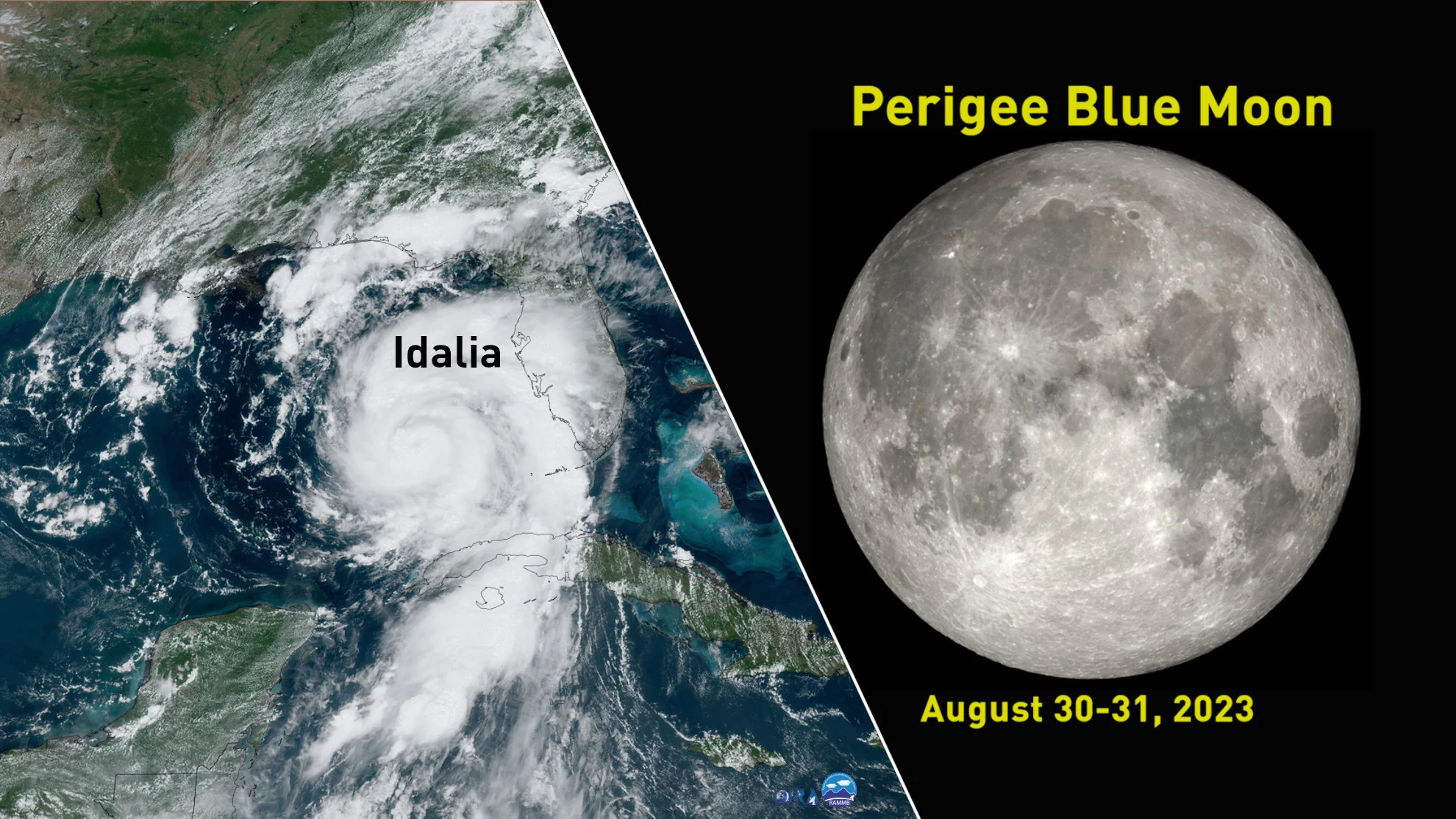
The rare blue supermoon could worsen Hurricane Idalia's impact on Florida
The coincidence of the Perigee Blue Moon with the approach of Hurricane Idalia may make a bad situation worse for the Gulf Coast of Florida.
A rare supermoon is lighting up the sky this week, but the timing of this astronomical event is almost as bad as it could get for communities along Florida's Gulf Coast.
Hurricane Idalia is tracking north into the Gulf of Mexico and is expected to sweep across northern Florida starting Wednesday morning.
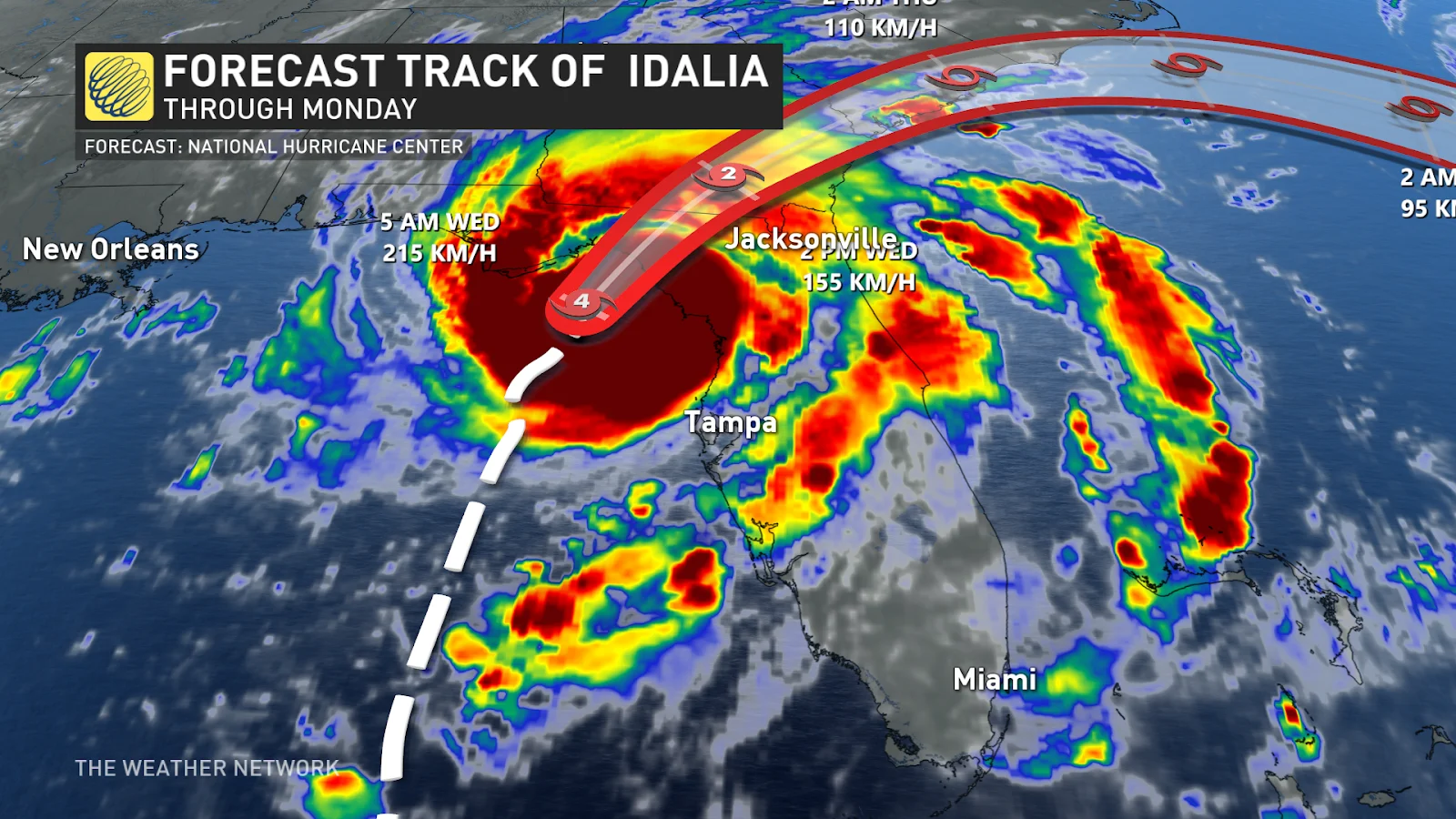
According to National Hurricane Center forecasts, there will be life-threatening storm surge of 0.5-1.5 metres in Tampa Bay, with catastrophic storm surge expected farther north, at 3.5-5 metres, from Aucilla River to Yankeetown.
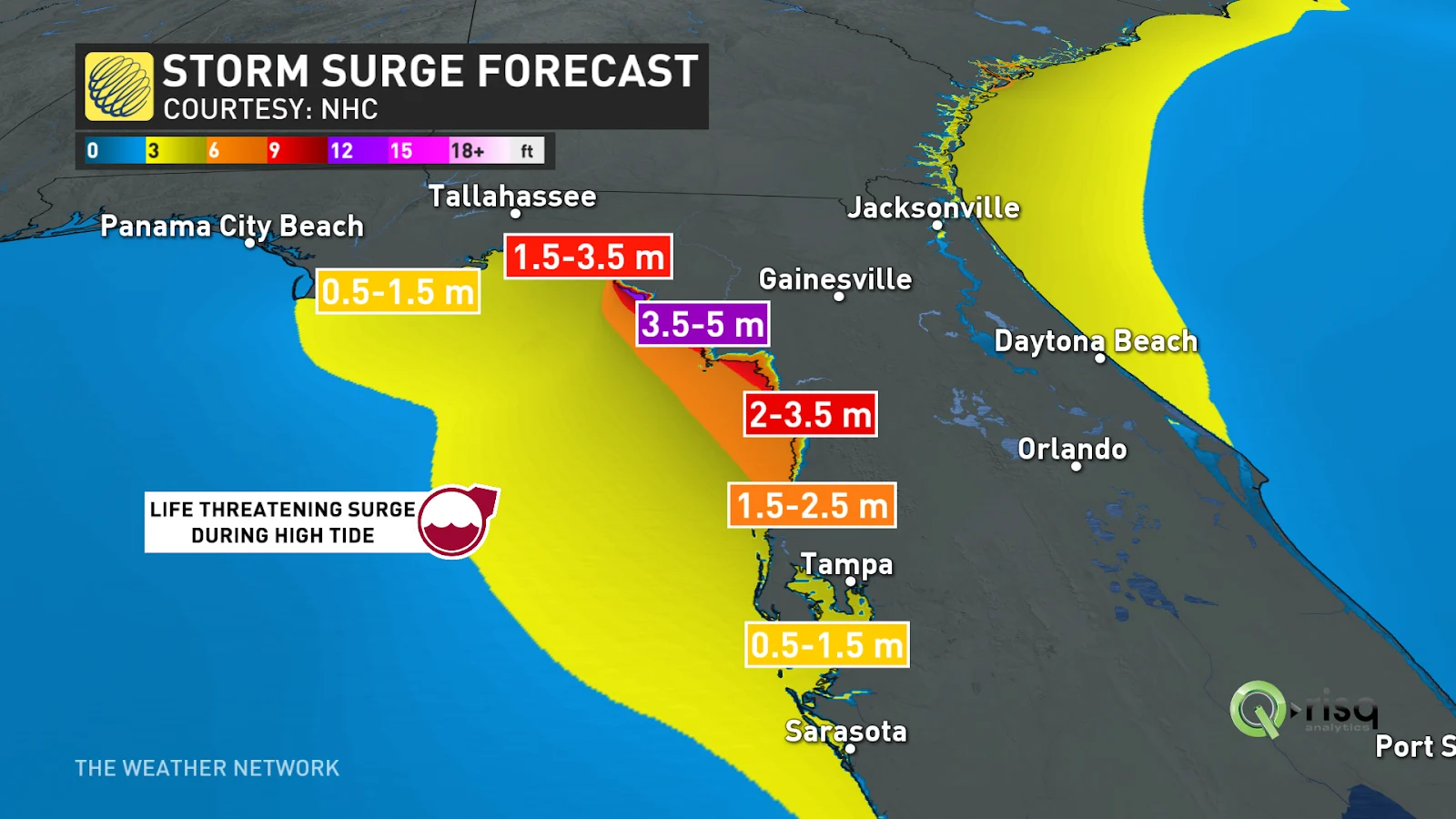
However, the storm surge from Idalia isn't the only worry here. The coast of Florida is experiencing its highest high tides of the year right now due to the effects of Wednesday night's Perigee Blue Moon.
--
READ MORE: Eyes to the sky this week to see the super-rare Perigee Blue Moon
--
Perigee Blue Moon King Tides
Earth's ocean tides are caused by a combination of the gravitational pulls of the Sun and the Moon. As Earth travels around the Sun, there is always a slight bulge of the ocean waters facing directly towards the Sun and directly away from it. At the same time, the Moon's gravity produces another larger bulge of water (since it is closer to us), which follows along in its wake as it orbits around Earth.
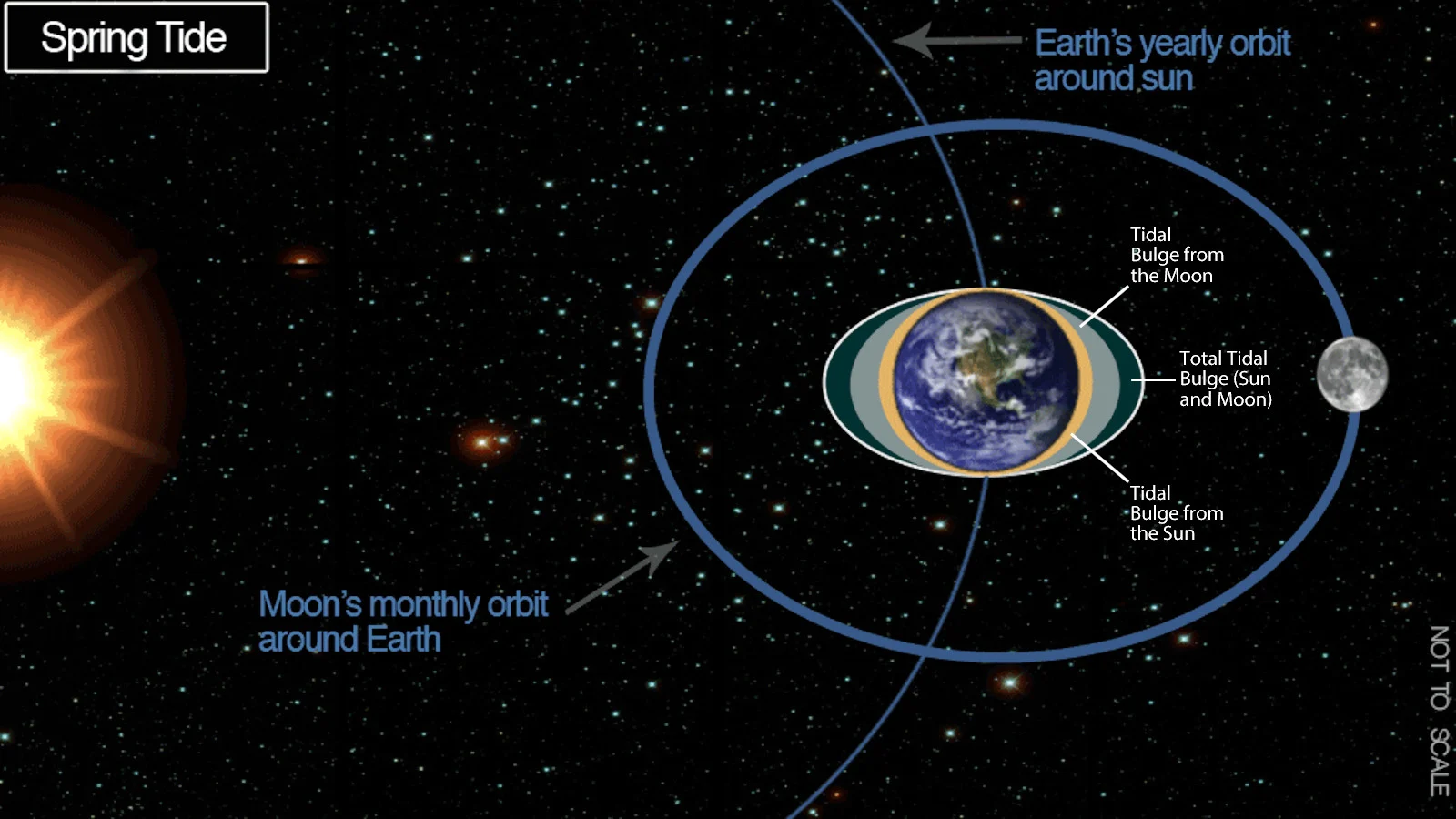
The Moon, Earth and Sun lining up during a Full Moon (or New Moon) — known as syzygy — produces spring tides in Earth's oceans. Credit: NOAA Ocean Services
Thus, as Earth rotates through a full 24-hour day, each location on the planet passes through these tidal bulges twice, giving us the twice-daily high and low tides. The exact height of the tides depends on how closely aligned the two tidal bulges are. There are higher high tides and lower low tides ('spring tides') when the two are lined up during the Full Moon or the New Moon (known as 'syzygy'). The tides are more even ('neap tides') when the two are offset.
Also, due to Earth's elliptical orbit around the Sun, the solar tidal bulge is slightly larger when we are closest at perihelion in January and smaller when we are at aphelion (our farthest) in July. Similarly, the Moon's elliptical orbit around Earth makes the Moon's tidal bulge large during supermoons and smaller during micromoons.
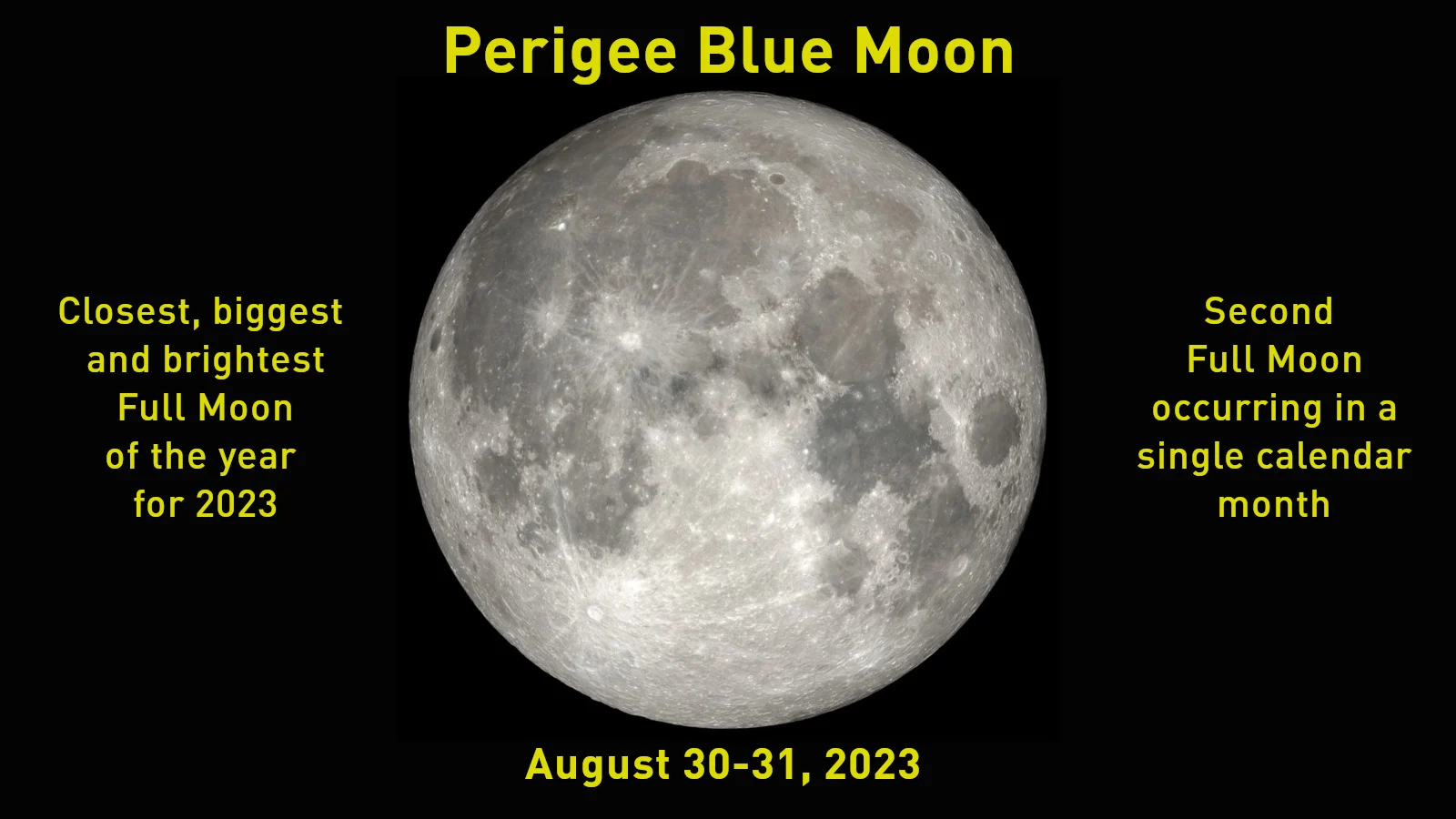
The August 30-31 Full Moon. Credit: NASA's Goddard Space Flight Center/Scott Sutherland
This week, we are experiencing an astronomical phenomenon known as the Perigee Moon, the closest Full Moon of the year. At the same time, it is also a Blue Moon — the second Full Moon occurring within a calendar month — and the combination of these two events is so rare that we haven't seen one in 27 years, and we won't see the next until 2115!
Due to this being the closest Full Moon of the year, though, the oceans are experiencing a stronger pull from the Moon's gravity. As a result, the tides along Florida's Gulf Coast are swelling to their highest point of the entire year.
This is known as the Perigean Spring Tides. They are also called the King Tides.
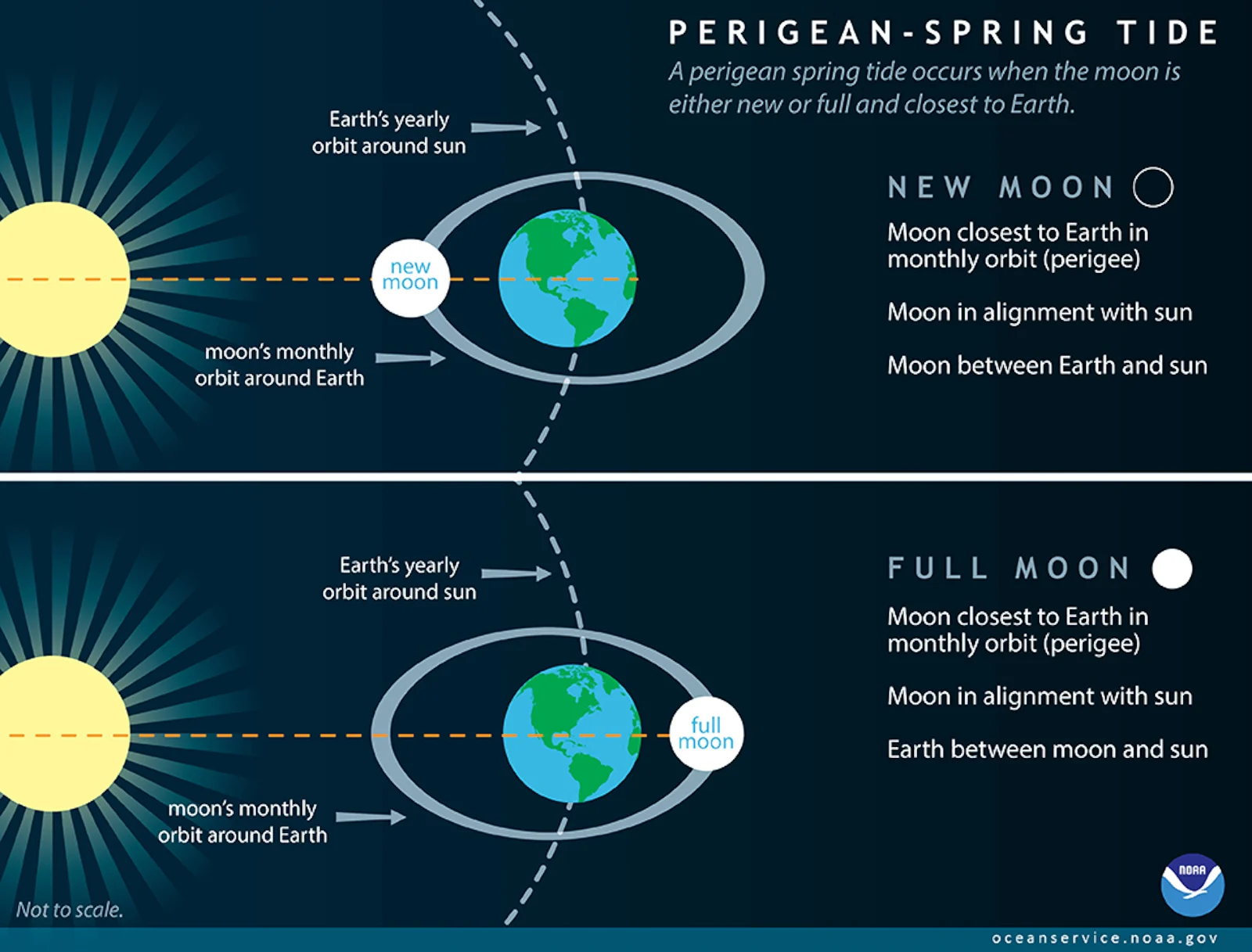
This graphic shows the configuration of the Sun, Moon, and Earth that produces Perigean Spring Tides or King Tides. Credit: NOAA Ocean Services
According to NOAA, high tides throughout the area that will see the greatest storm surge from Idalia were already forecast to be up to 30 cm (1 ft) higher than normal due to the Perigee Moon. Based on this, the agency was already expecting a 15 per cent chance of high tide flooding in that region on Wednesday due to the effects of the Moon's gravity, and a 20 per cent chance on Thursday.
Thus, depending on the exact track of Idalia and how closely the timing of the storm surge peak coincides with high tide, the results could be devastating. The only thing worse would be if the surge peaked during Thursday's high tide when the Moon's gravity is expected to cause water levels to be even higher.
(Thumbnail courtesy CIRA, NOAA, and NASA's Goddard Space Flight Center)











